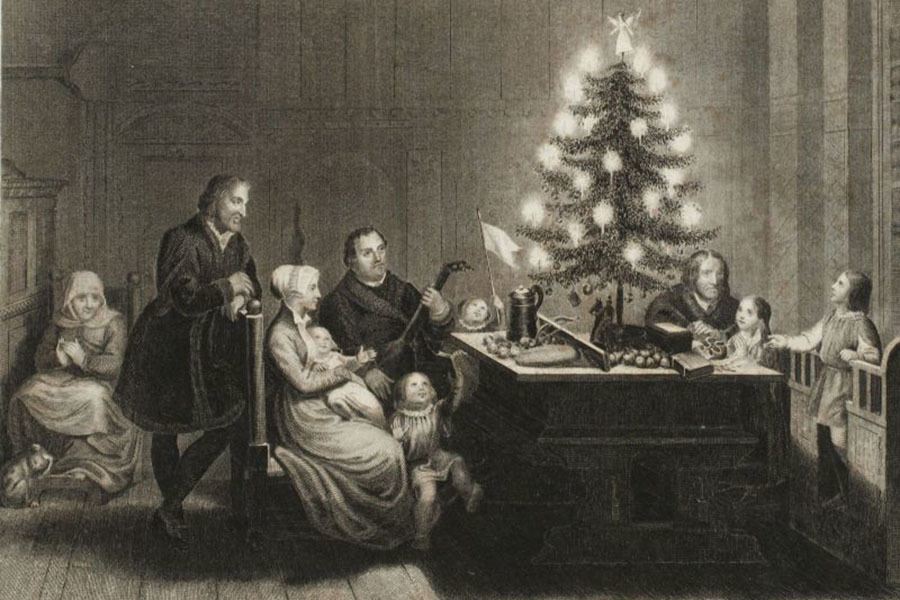History of the Christmas tree
History of the Christmas tree

The history of the Christmas tree begins in the 14th century
The Christmas tree was not always part of the Christian celebration but had its roots in pagan customs. Many centuries ago, plants in pagan cultures were a symbol of fertility and vitality. At the winter solstice the Germanic folks where putting fir branches in front of their houses. Not only were they a sign of fertility. The green of the needles symbolised hope and the continuation of life at the longest night of the year.
In northern areas of Europe, what we today would consider the Celts, throughout winter, fir branches were hung in the house to prevent evil spirits and to feed hope for the next spring.
It was not until the Middle Ages, that not only branches but whole trees where decorated. Some say, the idea of the decoration was taken over from the tradition of the decorated Maypole. It is believed that in 1419, a baker in Freiburg, hung gingerbread, apples, fruits and nuts on the tree for the first time. However, it was not until 1579 when the first Christmas tree found its way into the living room of people.
What started as a pagan’s custom became a celebration of the rich. Fir trees were scarce in Central Europe at the time and therefore very expensive.
However, Christmas and its decorated Christmas tree spread over Europe. Firs and spruce forests were cultivated to meet the high demand. By 1850 Christmas has become a tradition throughout Europe. By the rich as well as by the poor. A sacred time of celebration.
How did the Christmas tree find its way to America
In 1832, a German-born Harvard professor set up a Christmas tree in his home in North America where he introduced the Christmas tree for the first time and by 1891 the Christmas tree was first put into the White House. Only a year later electric candles replaced the wax candles.
The Christmas tree and the Catholic Church
Since the Christmas tree was a symbol of paganism, the Catholic Church resisted this custom for a long time. It was not until the middle of the 20th century that Christmas trees were allowed in Catholic churches. It was under Pope John Paul II that in 1982 the first Christmas tree was erected on St. Peter's Square in Rome.
Meanwhile, the Christmas tree is an integral part of Christmas, reminding people on the northern hemisphere of the world, that the season eventually will change. It will get warmer, lighter, and with it, a fruitful year is to come.



Facebook